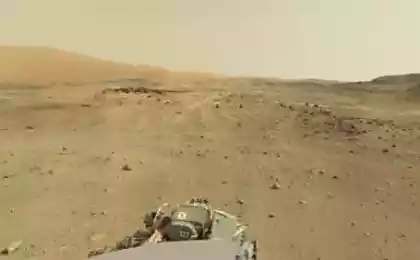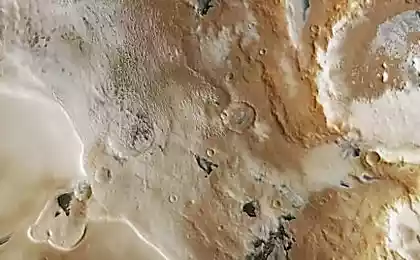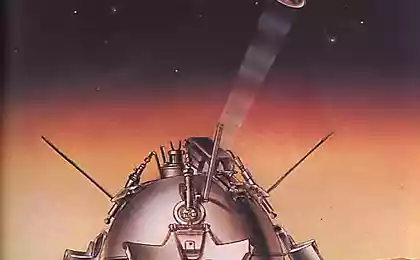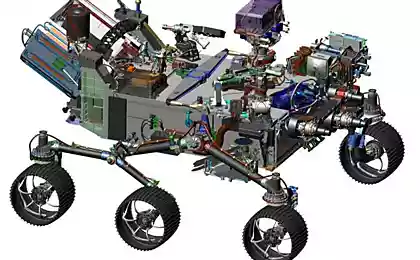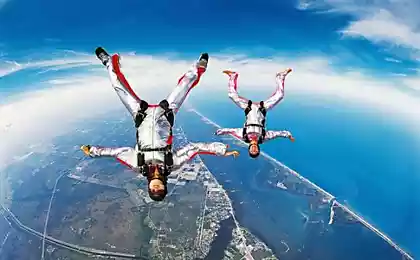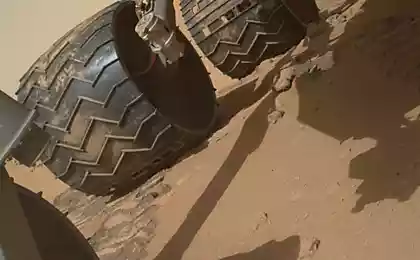1206
Slowing down with NASA JPL
Useful still thing this parachute! And pilots can save lives and to deliver humanitarian assistance where needed. A particularly interesting - even a neighboring planet to plant. Parachutes in space - a private, noteworthy topic.
Under the cut I will tell, but rather show the latest advances in the NASA test new "brake" models.
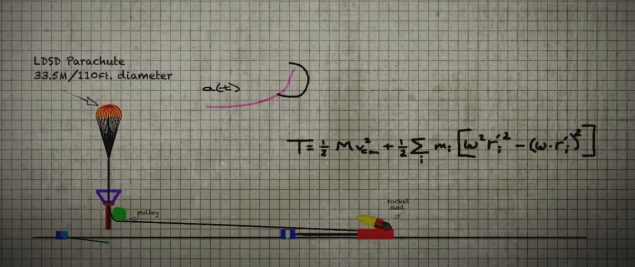
To start with a little history of skydiving.
Parachutes were invented a long time - even Leonardo da Vinci was able to calculate the approximate size and shape, neobhodimyyu for safe descent of man through the air. However, while that there was no need, there was at least some production. Parachutes entered our lives in the XVIII century - as a measure of safety when flying in a balloon, and finally confirmed with the development of aviation. Today it is hard to find a man, if not secretly dreaming of amateur jumping from a height.
But resourceful mankind has found yet another useful application of this simple invention. Since the beginning of space exploration, we have not only to use parachutes to land, but also for at% planetname% eniya - most importantly, that the atmosphere of the object allowed. Do not be too sparse to be able to take advantage of resistance. Well, too tight is not necessary to the spacecraft crashed on the firmament, in fact in terms of landing just such a property would be useful.
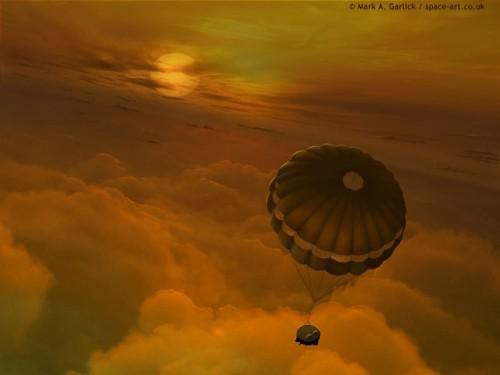
The lander enters the middle layers of the atmosphere of Titan i>
That canopy (lain on the surface of the planet-neighbor for over 40 years) was one of the clues by which not long ago was found Soviet spacecraft Mars-3. Yes, already in 1971, to adopt an integrated landing system - just because of the peculiarities of the Martian atmosphere. First was released pilot chute, which osvobdil main compartment (just tearing the cover). When the rate of fall fell to transonic, main parachute opened fully, and at a height of about 20 feet like his brother disconnected from the exhaust system, to give the right "brake" jet engine. As we can see, the apple fell from the tree near, in the truest sense - Dome indicated where necessary to search.
Even more interesting story landing at Curiosity. Included features and innovations , safely hidden in the capsule, "Curious," released his parachute at double the speed of sound. With such enormous speeds using special parachutes. They are called - "Supersonic". Heavy-duty, highly reliable - a genius of engineering! Their main drawback is the size: it heavier than the machine we want to land safely, the greater should be the area of the parachute. From time to time with such dimensions had to put up, but the question arose sideways during tests of the latest models of LDSD (Low-Density Supersonic Decelerator - maloplotnyh Supersonic moderator). The huge dome just did not want to be placed in a wind tunnel! How did NASA has decided to deal with it? Let's listen to themselves:
P.S. I carries the voice and video for Russian-speaking segment, but if someone ischёt original - here he . By the way, there is a channel NASA JPL very good and affordable tells about the mission and plans. Council.
Source: habrahabr.ru/post/218925/
Under the cut I will tell, but rather show the latest advances in the NASA test new "brake" models.

To start with a little history of skydiving.
Parachutes were invented a long time - even Leonardo da Vinci was able to calculate the approximate size and shape, neobhodimyyu for safe descent of man through the air. However, while that there was no need, there was at least some production. Parachutes entered our lives in the XVIII century - as a measure of safety when flying in a balloon, and finally confirmed with the development of aviation. Today it is hard to find a man, if not secretly dreaming of amateur jumping from a height.
But resourceful mankind has found yet another useful application of this simple invention. Since the beginning of space exploration, we have not only to use parachutes to land, but also for at% planetname% eniya - most importantly, that the atmosphere of the object allowed. Do not be too sparse to be able to take advantage of resistance. Well, too tight is not necessary to the spacecraft crashed on the firmament, in fact in terms of landing just such a property would be useful.

The lander enters the middle layers of the atmosphere of Titan i>
That canopy (lain on the surface of the planet-neighbor for over 40 years) was one of the clues by which not long ago was found Soviet spacecraft Mars-3. Yes, already in 1971, to adopt an integrated landing system - just because of the peculiarities of the Martian atmosphere. First was released pilot chute, which osvobdil main compartment (just tearing the cover). When the rate of fall fell to transonic, main parachute opened fully, and at a height of about 20 feet like his brother disconnected from the exhaust system, to give the right "brake" jet engine. As we can see, the apple fell from the tree near, in the truest sense - Dome indicated where necessary to search.
Even more interesting story landing at Curiosity. Included features and innovations , safely hidden in the capsule, "Curious," released his parachute at double the speed of sound. With such enormous speeds using special parachutes. They are called - "Supersonic". Heavy-duty, highly reliable - a genius of engineering! Their main drawback is the size: it heavier than the machine we want to land safely, the greater should be the area of the parachute. From time to time with such dimensions had to put up, but the question arose sideways during tests of the latest models of LDSD (Low-Density Supersonic Decelerator - maloplotnyh Supersonic moderator). The huge dome just did not want to be placed in a wind tunnel! How did NASA has decided to deal with it? Let's listen to themselves:
P.S. I carries the voice and video for Russian-speaking segment, but if someone ischёt original - here he . By the way, there is a channel NASA JPL very good and affordable tells about the mission and plans. Council.
Source: habrahabr.ru/post/218925/







